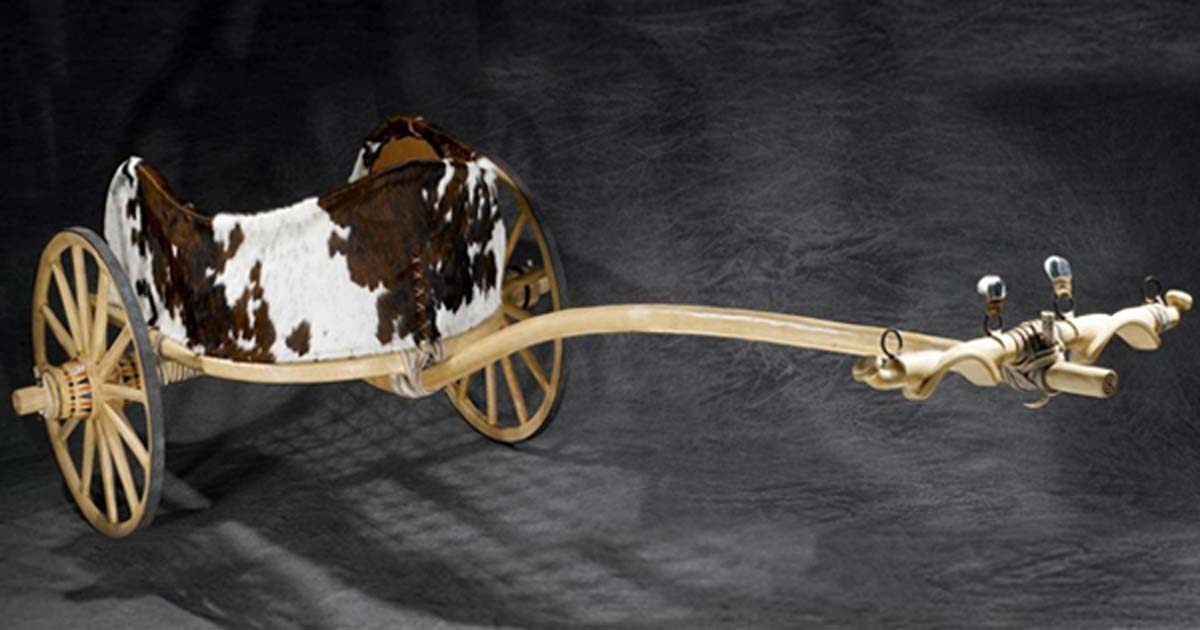2,500-Year-Old Celtic Chariot Proves Iron Age Links with Mainland Europe
The Newbridge Chariot is the name given to the remains of a Celtic chariot found in Edinburgh, Scotland. The burial is found to date to around the 5 th century B.C., hence placing it in the Iron Age. The Newbridge Chariot is significant as it is the first of its kind to be unearthed in Scotland and it may suggest that Iron Age Scots had closer ties with Europe that previously thought. It has been speculated that this chariot is associated with a burial, and that someone of a high status was buried near the place where the chariot was discovered.

The construction of the new Edinburgh Interchange was planned to begin in 2001. Before the building work could be undertaken at the site, however, an archaeological excavation of the area had to be carried out, as ordered by the Edinburgh City Council. This was due to the fact that the construction site was located near Huly Hill, a Bronze Age burial cairn with three standing stones, at Newbridge, several km to the west of Edinburgh city centre, and close to Edinburgh Airport. The excavation of the site was carried out by archaeologists from Headland Archaeology and the National Museum of Scotland.

The Newbridge Chariot was discovered during an archaeological investigation ahead of the construction of the Edinburgh Interchange, picture (CC by SA 2.0 / Derek Ferris)
It was during this excavation, in March 2001, that the Newbridge Chariot was unearthed. This discovery was completely unexpected, and was a great surprise to the archaeologists, as it was the first Iron Age chariot to have been found in Scotland.
Chariots were recorded by Roman writers to have been used by Celtic warriors in warfare. Each chariot consisted of a cart pulled by a pair of horses and manned by a team of two, a driver and a warrior. One of the tactics used by the chariot teams was as a sort of transport for the warrior. The chariot would be driven into the battlefield and the warrior would dismount to fight as an infantryman. When the warrior became tired, he could get back onto the chariot and leave the battle. Another tactic used was for the chariot to move around the battlefield, whence javelins would be thrown at the enemy. The loud noises made by the chariots were also said to have intimidated the enemy.

Celtic warriors riding a chariot (CC 3.0)
Initially, the Newbridge Chariot was thought to date to around 250 B.C. The tyres / outsides of the chariot’s wheels were made of iron, and, as a result of corrosion, some fragments of wood from the wheels were preserved. These were found during the excavation of the wheel in the laboratory, and were used to provide a radiocarbon date for the vehicle. The result of this analysis suggests that the chariot was built between 475 and 380 B.C., making it the oldest chariot to have been found the Britain.
The iron tyres also enabled the chariot wheels to be reconstructed accurately, as the position and shape of the wheels were preserved. Further information about the chariot that was gathered from the excavation enabled a complete reconstruction of the Newbridge Chariot to be made in 2007. This replica is now in the possession of the National Museums Scotland.
The Newbridge Chariot also provides some information about the Celts living in Scotland and those living in other parts of Europe. For example, some technical details, such as the way the wheels were made and the lack of suspension fittings suggest that the Newbridge Chariot was different from its European counterparts. However, the way the chariot had been buried in Newbridge was identical to the ones carried out in Belgium and France, where the complete cart was buried.
“Scotland is often seen as being at the fringe of Iron Age Europe, cut off from the mainstream,” said Dr Stephen Carter, Director of Headland Archaeology of Edinburgh [via The Megalithic Portal]. “This evidence reminds us that there were great connections between Scotland and Europe in prehistory, especially by sea.”
Top image: A reconstruction of the Newbridge Chariot. Credit: National Museum of Scotland
By Wu Mingren
Related Post
A shocking documentary proves that mermaids do exist
SHOCKING Revelation: Thuya, Mother of Queen Tiye, Was the Grandmother of Akhenaten and Tutankhamun—What Ancient Egyptian Secrets Did She Leave Behind?
Breaking News: Astonishing Discoveries at Karahan Tepe Confirm an Extraterrestrial Civilization is Hiding on Earth, and NO ONE Knows!
Breaking News: Researchers FINALLY Discover U.S. Navy Flight 19 After 75 Years Lost in the Bermuda Triangle!
NASA’s Secret Investigation: Uncovering the Astonishing Mystery of the UFO Crash on the Mountain!
Explosive UFO Docs LEAKED: Startling Proof That Aliens Ruled Ancient Egypt!